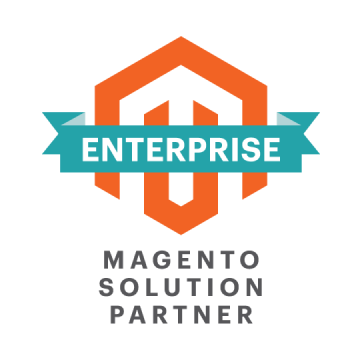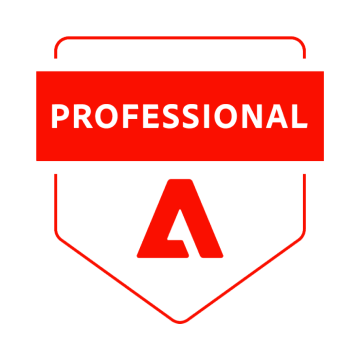Insurance IT Solutions
Modernizing core platforms, claims, underwriting, and agent experiences takes a partner who understands how legacy systems, regulation, and cost pressure intersect. We design and deliver insurance IT solutions that shorten claim cycle time, improve loss control with underwriting analytics, and reduce operating overhead through safe automation and thoughtful system integration. From policy administration modernization and API-first architecture to cloud migration for insurers and fraud analytics that surface high-risk patterns, our team builds software that fits how your business runs today – and scales with tomorrow’s book of business.

Our Offerings
Core System Modernization (Policy, Billing, Claims)
We upgrade or replace policy administration, billing, and claims modules without halting day-to-day operations. Typical engagements start with an architecture and data map, then use the strangler pattern and API adapters to decouple legacy components. We standardize data contracts, retire brittle batch jobs, and introduce event-driven flows so new features ship faster and defects are easier to isolate. The outcome is a platform that supports new products, expansion, and lower run costs.
Claims Intake & Orchestration
We build FNOL and claim workflows that route work by severity, coverage, and exposure type. Rules and machine-learning triage move straightforward cases through straight-through processing while flagging exceptions for adjusters. Integrations cover document ingestion, payments, repair networks, medical review, and subrogation. Auditable tasks, SLAs, and outcome tracking make cycle time and leakage visible and actionable.
Underwriting Workbench & Risk Analytics
Underwriters get one workspace for submissions, clearance, exposure checks, referrals, and bind. We consolidate internal and third-party data—loss history, property characteristics, telematics, credit-based attributes—then surface risk scores and explanations inside the workflow. Pricing guidance is tied to appetite and authority, with referral queues and chat-style collaboration to move complex deals forward. Historical decisions and outcomes feed model updates to improve hit ratio and loss ratio over time.
Rating & Product Configuration
Actuaries and product teams manage rating logic, factors, and eligibility rules without vendor tickets. Versioned rate tables, scenario testing, and rollback let teams validate filings and rollouts safely. We provide APIs for quote/bind across web, agent, and partner channels, plus guardrails to prevent unintended premium drift. Product changes move from idea to market faster and with fewer defects.
Agent & Customer Portals
Producers and policyholders get responsive portals for quote, bind, endorsements, renewals, and payments. We implement role-based views, document e-delivery, secure messaging, and appointment/licensing checks. CRM and marketing automation hooks (e.g., Salesforce, HubSpot) support lead routing and cross-sell while keeping compliance needs in view. The result is less call volume and a smoother experience across channels.
Data Platform, BI & Regulatory Reporting
We set up a lakehouse with governed data products for policy, claims, finance, and distribution. Near real-time pipelines power dashboards for combined ratio, loss triangles, reserve development, and producer performance. Lineage and data quality checks make reconciliations credible. Prebuilt datasets accelerate statutory and management reporting without locking into one visualization tool.
How We Bring Value To Your Business
We focus on outcomes that move loss ratio, expense ratio, and growth – not vanity metrics.
1
Shorter claim cycles
From FNOL to settlement, workflows route by severity and coverage, apply straight-through processing to low-complexity claims, and surface next-best actions for adjusters. Integrations with payments, repair networks, medical review, and subrogation remove handoffs, cut leakage, and make cycle time visible and manageable.
2
Lower operating cost
We retire redundant vendors, replace brittle batch jobs with event-driven flows, and right-size cloud resources with usage-based controls. Finance gets unit-cost views (per policy, per claim, per submission) and early warnings when spend drifts from plan.
3
Reduced legacy risk
APIs and adapters decouple monoliths so critical functions can move in phases. Blue-green deployments, feature flags, and parallel runs keep business users working while systems evolve. Reversible releases make upgrades routine, not disruptive.
4
Better decisions with trusted data
A governed lakehouse consolidates policy, claims, billing, and distribution data with lineage and quality checks. Near real-time dashboards cover combined ratio, reserve development, producer performance, and in-force exposure, so leaders act on current numbers instead of month-end exports.
5
Faster product changes
Rating and eligibility logic live in versioned configs with scenario testing and rollback. Product and actuarial teams can adjust factors, file changes, and publish to web, agent, and partner APIs without waiting on vendor queues.
6
Stronger fraud detection
Anomaly and graph analytics flag suspicious patterns across claimants, providers, and assets. Alerts flow into SIU work queues with evidence capture and audit trails; investigator feedback retrains models so signal quality improves over time.
Challenges We Commonly Solve
Most roadblocks trace back to legacy debt, scattered data, and workflows that grew around exceptions rather than the business you run today.
Fix your highest-cost bottleneck first.
Why Choose WiserBrand
You need a partner who ships safely, integrates cleanly, and proves impact early.
1
Domain + engineering in one team
We translate coverage terms, rating factors, and claims rules into APIs, data models, and workflows that make sense to both business and IT. Underwriters, adjusters, and actuaries join working sessions; developers deliver increments mapped to authority, controls, and filing timelines.
2
Incremental change with reversible releases
Adapters decouple the monolith, parallel runs validate outputs, and feature flags plus blue-green deployments keep every change roll-backable. You get a clear dependency map, weekly burn-up, and test evidence so operations continue while systems evolve.
3
Integration-first and data you can audit
We connect core platforms with CRM, payments, document management, and analytics using versioned contracts and event-driven patterns. Lineage, quality checks, and reference-able sources back every metric and AI output, so decisions hold up in reviews and audits.
Cooperation Models
Pick the engagement format that matches your risk profile, budget, and timeline.
A focused assessment that de-risks decisions before major spend. We map current systems and integrations, identify constraints, and propose a target architecture with a phased plan. Deliverables include a dependency list, cost and effort ranges, a prioritized backlog, and a pilot definition to validate impact in one area of the insurance value chain.
A cross-functional squad delivers in increments with clear acceptance criteria and biweekly demos. We use feature flags and blue-green releases to keep operations running while new capability goes live. Commercial options include time-and-materials with a cap or fixed-scope milestones. Artifacts: release plan, test evidence, runbooks, and knowledge transfer.
A stable team (engineers, data, QA, DevOps) works as your extended unit. We handle roadmap execution, integrations, and production support in one cadence with your product owner. You get capacity planning, KPI tracking (cycle time, defect rate, cost per claim/policy), and predictable throughput as needs shift across underwriting, claims, and distribution.
Our Experts Team Up With Major Players
Partnering with forward-thinking companies, we deliver digital solutions that empower businesses to reach new heights.
Our Approach
We move in small, low-risk increments and prove impact early, so operations keep running while the platform evolves.
Discover & Prioritize
We interview business and IT leads, map current systems and integrations, and trace key workflows (quote/bind, FNOL, payments, renewals). The output is a dependency map, risks, and a ranked backlog focused on cycle time, unit cost, and data trust.
Prove with a Pilot
We select one high-impact slice – e.g., claims intake or rating changes – and build a pilot with clear success metrics (handling time, leakage, hit ratio). Parallel runs compare new vs. current outcomes, giving decision-makers evidence before wider rollout in insurance operations.
Build & Integrate
Using API adapters and event-driven patterns, we add new capability beside the legacy stack. Feature flags, blue-green releases, and automated tests keep changes reversible. Integrations cover document services, payments, CRM, data vendors, and reporting so the new path becomes the default without disruption.
Migrate in Phases
We retire specific jobs or modules via the strangler pattern: move one function, validate outputs, cut traffic, and decommission safely. Data pipelines add lineage and quality checks so policy, claims, and billing numbers reconcile across finance and regulatory reporting.
Operate & Improve
Runbooks, dashboards, and on-call routines shift the team from project mode to product cadence. We track KPIs (claim cycle time, cost per policy/claim, quote-to-bind) and schedule small releases to address bottlenecks, expand features, and keep cloud and licensing spend aligned with demand.
Case Studies
Our case studies highlight the outcomes we’ve delivered and the approaches that made them possible.
Insurance IT Solutions FAQ
Begin with a short discovery and a narrow pilot. We run new workflows in parallel, use feature flags, and switch traffic gradually once results match or beat current outputs.
Yes. We integrate via APIs, messages, and adapters, decouple high-value functions first, and retire legacy modules in phases to reduce risk.
We track claim cycle time, leakage, cost per policy/claim, quote-to-bind, SIU recoveries, and defect rate. Dashboards show trends and drill-downs by product, region, and channel.
Role-based access, encryption in transit/at rest, audit logs, and data-minimizing contracts. We align workflows and evidence with your internal controls and regulator-facing reports.
Discovery and roadmap: 2–6 weeks. Pilot delivery: 8–16 weeks depending on scope. A cross-functional squad (engineers, data, QA, DevOps, product) ships increments with biweekly demos.























